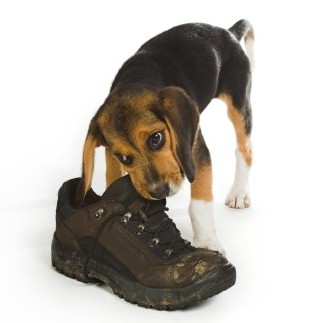Are You Making These 10 Dog Training Mistakes?
Are you making these 10 dog training mistakes?
Many people say that there is nothing better than having a dog. That is certainly true but do you know what’s even better? Having a trained dog. Many people try to train dogs themselves and that is perfectly fine if you know how to do it and how to avoid making some typical mistakes.
You should always be consistent! Avoid using various words for the same command. It will only confuse your dog and he won’t know what he has to do. For instance if you used “Heel” you can’t expect the dog to listen to you if tell him “Walk by me.”
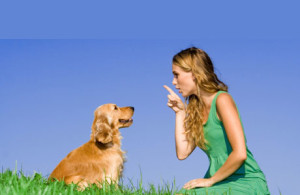 Start small. Just because you see a dog on TV do a trick doesn’t mean you can expect your dog to know it or learn it in a day. Be patient, start with some simple commands and then work toward the more complicated ones. And be realistic of your dog’s abilities.
Start small. Just because you see a dog on TV do a trick doesn’t mean you can expect your dog to know it or learn it in a day. Be patient, start with some simple commands and then work toward the more complicated ones. And be realistic of your dog’s abilities.
In any scenario, not just dog training, one of the worst things you can do is to physically punish your dog. It will only make the dog afraid of you, start acting aggressively toward you or people in your surroundings, and it will ruin your relationship.
Start early, when he is just a puppy. It will make it easier as you won’t have to put a lot of obedience training.
Don’t give up after one try. It might take some time but your dog will get the hang of the trick eventually. Look at yourself, you don’t learn everything at the same pace, some things you can learn faster and some take time.
Giving your dog treats when he does what he’s suppose to is the best encouragement. If you fail to reward him he won’t know if he did something right. Ignoring bad behavior is just as bad; you shouldn’t overlook it or even worse give him a treat while hoping he will do better next time.
Dogs pay a lot of attention to the sound of your voice and if you’re in the bad mood while training them they will notice. They will notice that your tone of voice and body language are different and he won’t be able to connect the command with the action.
Some people think that rubbing a dog’s nose in urine helps with the learning process but it doesn’t. The only thing it does is hurt your dog’s nose.
You want your dog to learn who has control so don’t let him eat at the same time you do, give him food after you’ve finished.
Puppies don’t have a large attention span so it is best to keep the lessons short. About 15 minutes a day will do the trick and make your dog learn its trick.
So, keep it short, have patience, talk cheerfully, do it consistently and your dog will in no time learn when to sit, be quiet and when to jump in your arms and kiss you.

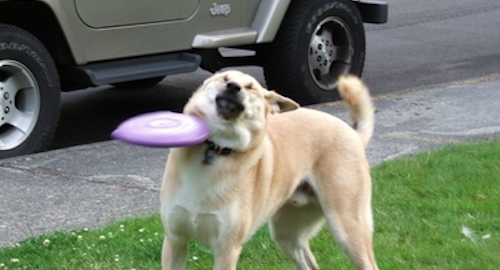
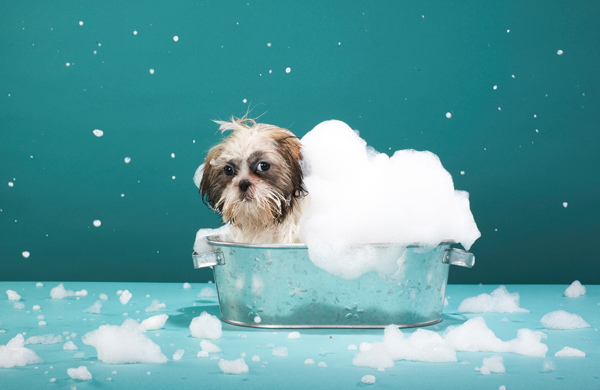
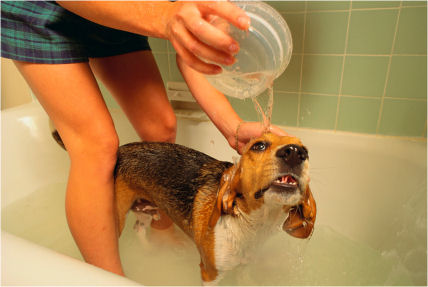 Some dogs get really scared when you put them in a tub full of water; they jump, slip, shake and look all together miserable and sad. During the bath you might even get wetter than your dog and you’ll spend most of the time trying to keep the dog in the tub. Instead of immersing the dog into water, it is much easier to give him a shower. The dog will feel safer if he’s standing firmly in the tub and you won’t be as wet. It is much easier to shampoo and rinse with a shower.
Some dogs get really scared when you put them in a tub full of water; they jump, slip, shake and look all together miserable and sad. During the bath you might even get wetter than your dog and you’ll spend most of the time trying to keep the dog in the tub. Instead of immersing the dog into water, it is much easier to give him a shower. The dog will feel safer if he’s standing firmly in the tub and you won’t be as wet. It is much easier to shampoo and rinse with a shower.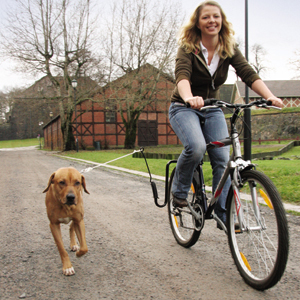
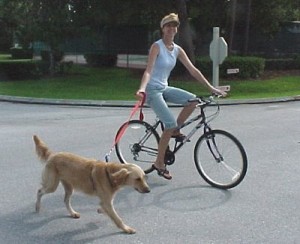 Before starting the training program it is recommended to visit a vet for consultation because not every
Before starting the training program it is recommended to visit a vet for consultation because not every 
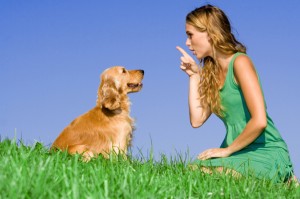 Except the cat people, everyone will agree to the fact that dog is man’s best friend. Wonder if the dogs think the same? Many proud owners of the dogs just don’t treat their pets the way they should. Here are ten training tips that will help you discipline your dog and resolve everyday problems. Arm yourself with a lot of patience and don’t expect instant “dog whisperer” miracles. Learning how to communicate with your dog will help build better and stronger relationship with your pet. And if you are a single guy, your dog can help you get some girls.
Except the cat people, everyone will agree to the fact that dog is man’s best friend. Wonder if the dogs think the same? Many proud owners of the dogs just don’t treat their pets the way they should. Here are ten training tips that will help you discipline your dog and resolve everyday problems. Arm yourself with a lot of patience and don’t expect instant “dog whisperer” miracles. Learning how to communicate with your dog will help build better and stronger relationship with your pet. And if you are a single guy, your dog can help you get some girls. Finally we get to the freedom. Don’t let your dog roam around the house too. That could lead to many mischiefs like chewing on furniture. Shut the doors and use crates to minimize dog’s area. At the end of the day let your dog sleep in the same room as you but, of course, not in your bed.
Finally we get to the freedom. Don’t let your dog roam around the house too. That could lead to many mischiefs like chewing on furniture. Shut the doors and use crates to minimize dog’s area. At the end of the day let your dog sleep in the same room as you but, of course, not in your bed.